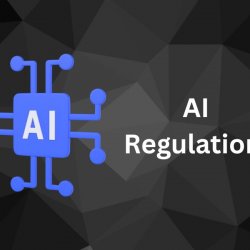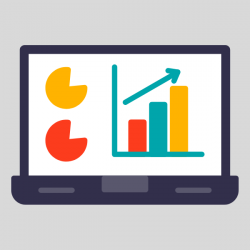Data Visualization: The Power of Seeing Beyond Numbers


Data Visualization The Power of Seeing Beyond Numbers
Introduction
We live in a world where data has become an integral part of our lives. From the everyday decisions we make to the big business decisions we take, data plays an essential role in helping us make informed choices. However, as data has grown in volume and complexity, it has become increasingly difficult to interpret its genuine meaning. This is where data visualization comes to the rescue.
Data visualization is the practice of representing data graphically so that patterns and relationships between different elements are easier to understand. It can unlock valuable insights from large amounts of data by enabling us to discover and illustrate relationships between different data points. Through this, it can help us gain deeper understanding about the causes and effects of certain events or behaviors, and ultimately lead us towards better decision making. Data Science Course in Delhi
Visualizing data is not only effective at uncovering hidden trends, but also more engaging compared to traditional tables or spreadsheets filled with numbers. By creating charts and diagrams that bring together different elements of a dataset, an organization can enhance understanding within their own team as well as communicate their message more effectively externally with customers, investors, partners or other stakeholders.
What is Data Visualization?
The visualization of data helps us find relationships between different fields of information in our datasets. Finding those connections can help us identify patterns that weren’t obvious from looking at the raw numbers alone. This process can then be used to discover new ways to solve challenges or make a decision based on the analysis of the data. Utilizing this type of visual representation of the data gives us a much clearer comprehension of what is contained within it, allowing for significantly more informed decisions to be made as a result.
Data visualization can also help us show results in an easy to understand way. Visualizations such as graphs and charts provide an immediate visual cue that makes digesting the complex data much easier. This means we don’t have to spend long periods sifting through large amounts of figures and statistics just to gain understanding. Instead we can get a clear picture with just a single glance at the visual representations.
Using data visualization puts you at an advantage when it comes to interpreting your data sets and making decisions based on them. It allows you to quickly identify trends, uncover problems in your datasets, or get insights that could potentially become ‘aha moments’ for you and your business or organization.
Benefits of Data Visualization
Data visualization has emerged as a powerful tool for exploring, comprehending, explaining, detecting, and communicating complex analytical insights. It enables us to quickly identify patterns and relationships hidden in deep data sets. Data visualization can also help to make difficult concepts more accessible by combining images and data points in a way that is easy to understand.
For example, if you have a large dataset of sales trends over time, data visualization can help you spot outliers or anomalies quickly and easily. Visualizing your data can also make it easier to explain statistical concepts to colleagues. Instead of presenting them with an endless array of numbers, you can clearly demonstrate relationships between variables with eye catching charts and diagrams. Data Analyst Course in Delhi
Data visualization is an incredibly powerful tool for anyone working with large datasets. It makes it easier to explore data and uncover meaningful insights that would otherwise remain hidden. By allowing us to easily create attractive visuals that communicate complex ideas in a clear way, it empowers us all to see beyond the numbers and gain deeper insight into our data.
Types of Data Visualizations
When it comes to data visualizations, there are many types available. From the common bar graph and line graph to more complex tools like heat maps and tree maps – each type reveals something unique about the data being examined.
A heat map is one of the more complex types of data visualizations, but it can be extremely useful for analyzing large datasets. Heat maps visualize quantitative values across two categorical variables by shading in different regions on a two dimensional map according to their corresponding values. In other words, heat maps “heat up” certain areas depending on how high their values are relative to others in the dataset. For example, if you wanted to see which countries had the highest exports or imports in a year, a heat map would be able to quickly illustrate this information by giving more vibrant colors to higher values and less vibrant colors for lower values.
To summarize: when it comes to data visualization there are many tools at your disposal: from basic bar graphs and line charts to complex heatmaps – all with their own unique purpose for revealing hidden patterns within large datasets. Learning how each type works is key for uncovering valuable insights.
Technology and Tools for Data Visualization
For example, with data visualization, you can see correlations between variables over time. This can help you identify trends or patterns that might have otherwise gone unnoticed. In addition, data visualization enables us to view complex sets of data in a way that is easier for the human eye to interpret. Its interactive nature allows for customizations so you can uncover the information that matters most to you.
When it comes to technology and tools for data visualization, there are many options available. One popular tool is Tableau Software, which helps users visualize their data through various charts, maps, graphs, and dashboards. Another powerful tool is Microsoft’s PowerBI which combines the power of business intelligence with state of theart data visualizations so users get maximum insight from their data. For developers who want to build their own customized solutions there are also open source software frameworks such as D3.js . With a little bit of coding knowhow you can tailor your solution exactly as you need it.
Using technology and tools for data visualization allows us to gain insights into our data in ways we might not have been able to before. We can uncover trends or patterns that could lead us to make better decisions informed by what our data is telling us; we can tell stories about our businesses with visuals; or we can even predict potential outcomes through predictive analytics all powered by data visualizations.
The Future of Data Visualization
The exponential growth of data over the years has created a sense of urgency among businesses to find new ways to visualize and analyze information. Data visualization is seen as one of the most effective means by which we can interpret various forms of complex information presented in varied formats. By transforming numbers into visuals, we are better equipped to understand complex relationships between variables, such as cause and effect relationships or trends across time frames.
Data visualization offers several benefits, including enhanced efficiency, improved decision making and understanding. With visual representations, it is easier for users to spot patterns that can be used for further analysis. For example, with a simple chart or graph, you can quickly see the main trend within large sets of numerical data or geographic information and come up with insights that may be difficult to gain through individual number crunching.
In addition, automation and artificial intelligence (AI) have led companies to adopt more sophisticated methods for visualizing complex data systems such as customer profiles or competitive analysis. AIdriven analytics allows businesses to segment customers into highly detailed categories while extracting valuable insights from their behavior patterns. Through AIpowered algorithms and predictive models, organizations are able to forecast consumer behavior trends based on past performance and make smarter decisions when it comes to marketing strategies or product design initiatives. Data Science institute in Delhi
Use the Power of Seeing Beyond Numbers to Gain Insight from Your Data
Visualizing your data can help you understand dynamics between related variables in ways that just looking at tables of numbers never could. Exploring patterns in a graphical format makes it easier to spot changes over time or recognize outliers. Analyzing trends in your data allows you to predict growth or decline and determine whether or not investments are worthwhile. Recognizing correlations between two or more different datasets can lead to valuable discoveries. Gathering insights from various sources can help identify relationships between seemingly unrelated items and unlock hidden connections.
Once these powerful tools are used together, they can be used to tell powerful stories about the information being studied. Data visualization also provides an effective way for individuals in different departments or areas of an organization to collaborate on projects more easily because everyone can see relationships quickly and come up with creative solutions together as a team.
In conclusion, using the power of seeing beyond numbers through proper data visualization helps one quickly gain insight from their data so they can unlock its potential and create stories that make sense of complex information. This process encourages collaboration among colleagues so they can work together more efficiently as well as brainstorm new ideas based on what they discover from their analysis.






Ingen kommentarer endnu